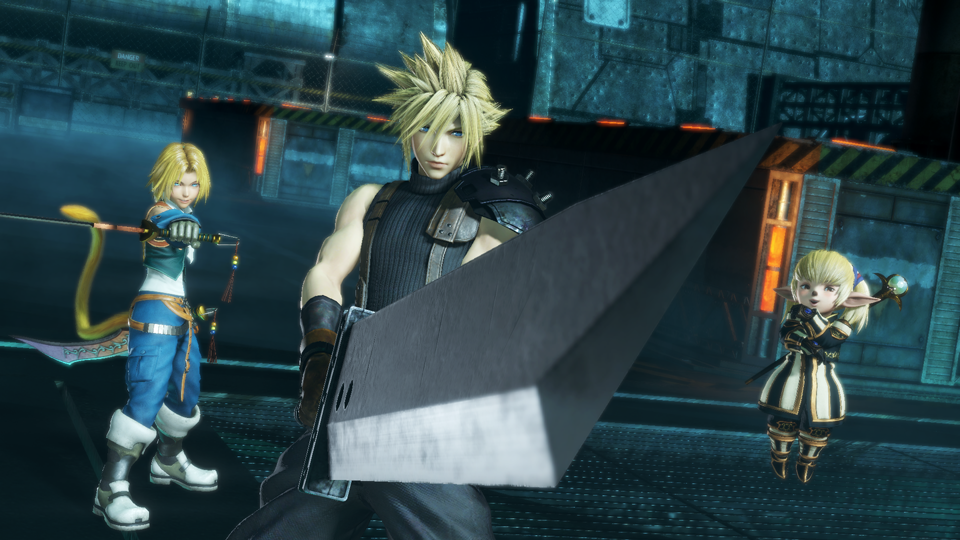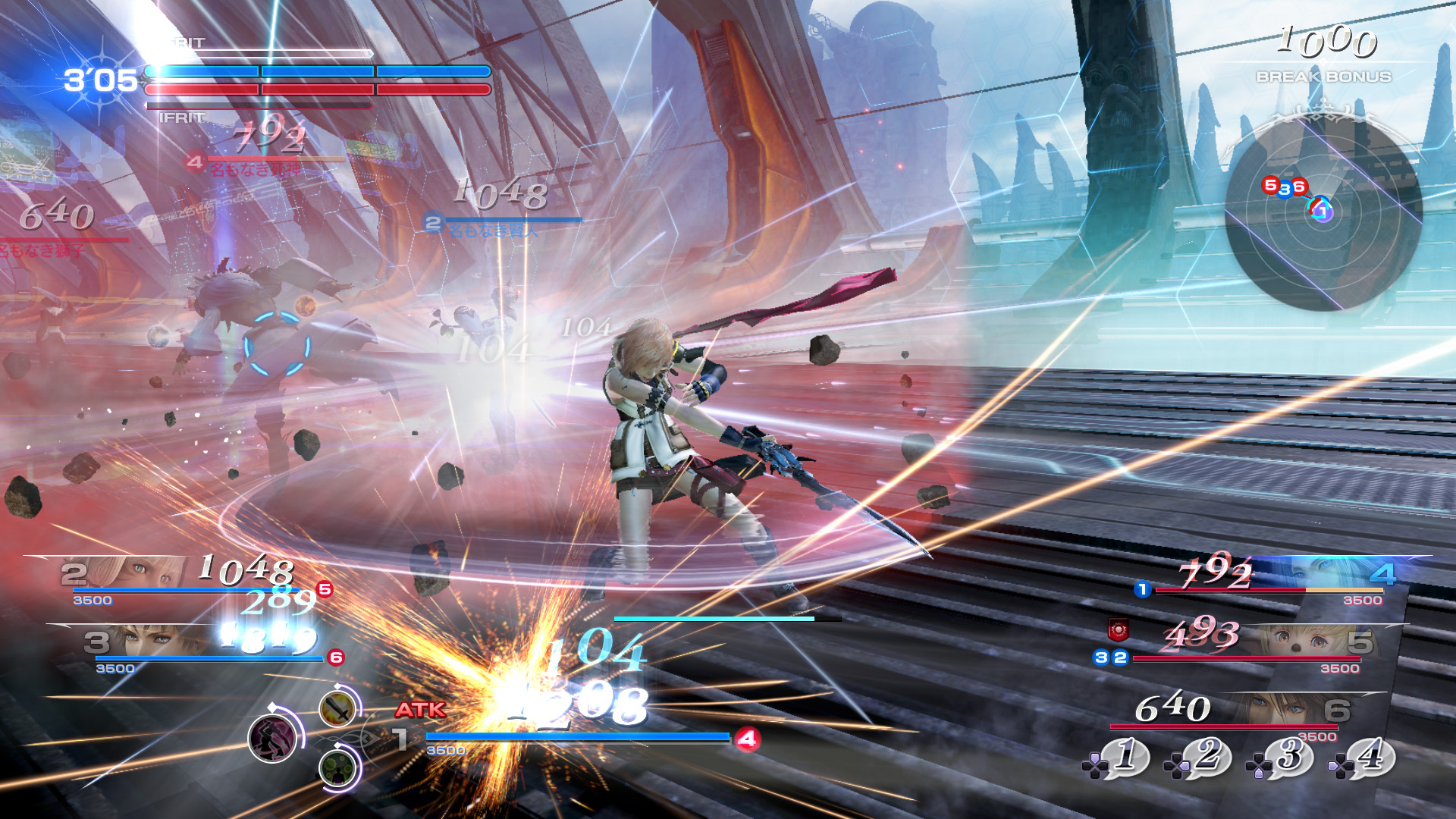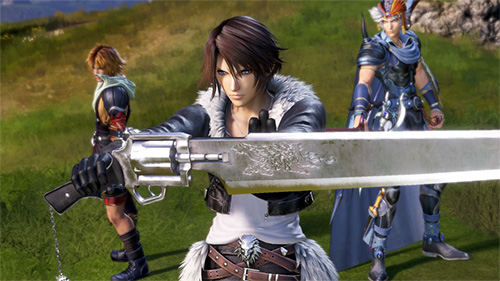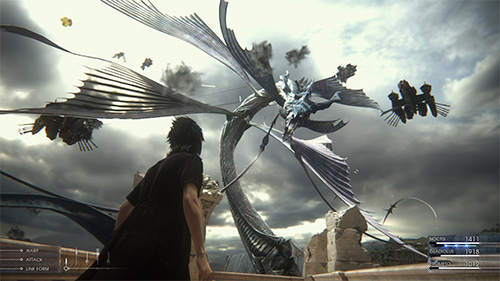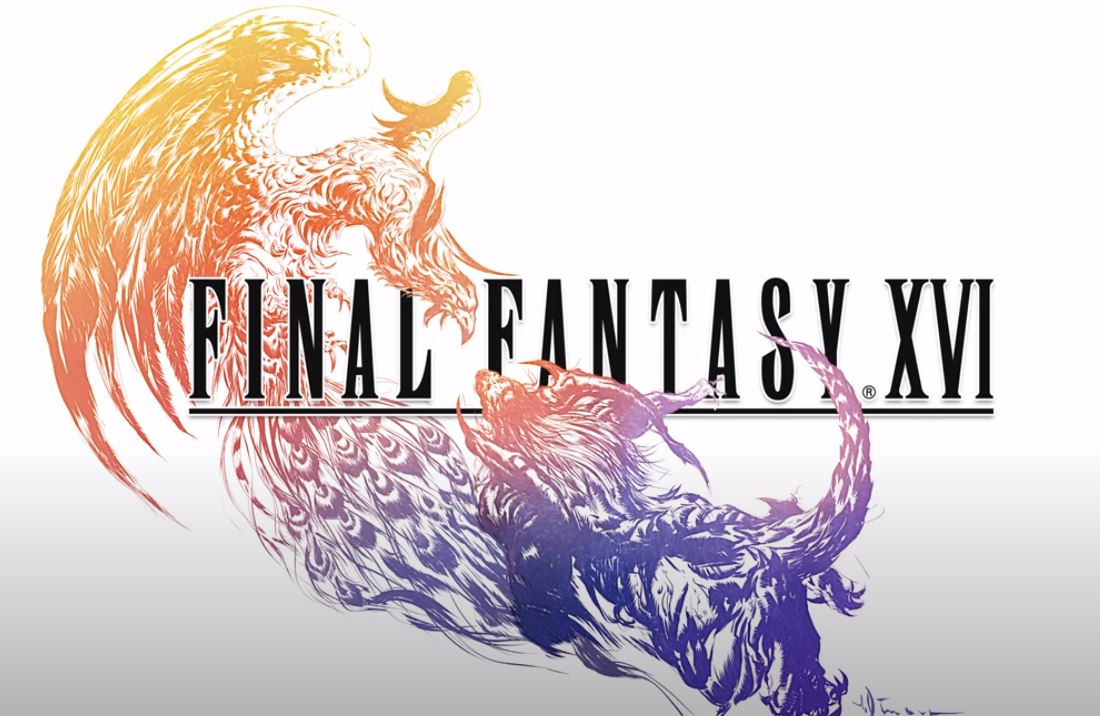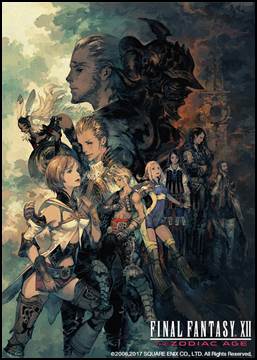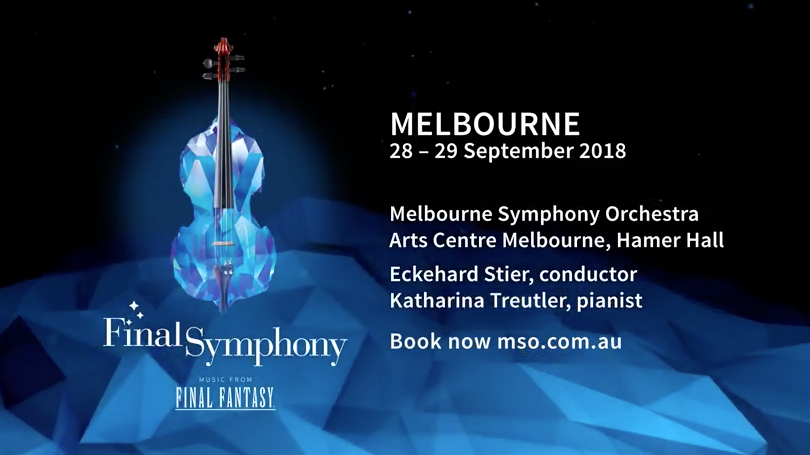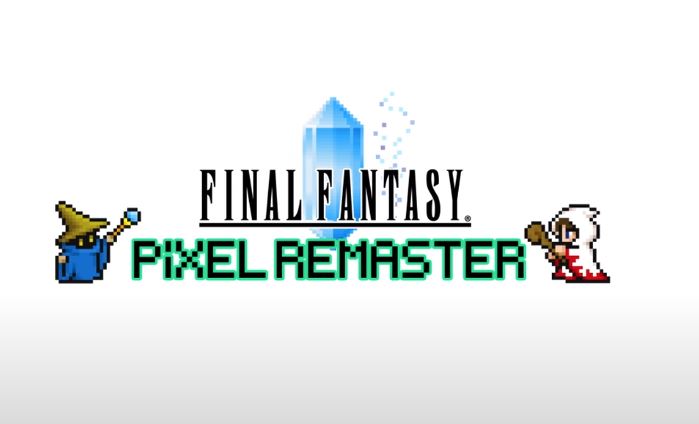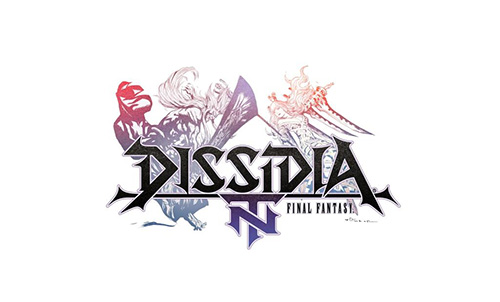
In my opinion, the Dissidia Final Fantasy series has always had an amazing premise and potential, but been let down by bizarre choices. A crossover event that allows characters from each of the hugely popular Final Fantasy games not only interact but fight with each other is a fan’s wet dream, and it’s an idea with so much appeal that it merits high production value. However, the series remained exclusive to PSP, likely due to the system’s popularity in Japan, with an attractive but relatively obsolete presentation that undercut the potential of a home console production. Instead of an broad and accessible fighting system, a highly-specialised and floaty 3D fighting engine was developed. And, Dissidia‘s lengthy story also decided to unite its heroes and villains and then rob them of any memories throughout, meaning any potentially geek-tastic meetings were dull as dishwater as the wandering amnesiacs could only comment on their present situation.
The series lay dormant for half a decade until Square-Enix joined with Team Ninja to revive the concept for an arcade game, and now in sadly-outdated tradition, Dissidia Final Fantasy NT is that game’s arcade port arriving on PlayStation 4. Off the bat, it appears to fix many of the issues I had with the previous games – the presentation is stellar, on the surface the gameplay seems simplified and the story actually allows its characters to remember things and play off each other in interesting ways. Between this and Final Fantasy XV, the Final Fantasy franchise’s self-improvement kick seems to be working out.
The roster has been slimmed slightly since the last entry, Dissidia 012 Final Fantasy, down from 31 playable characters to 28, and with some noticeable drops like Tifa and Gabranth. However, new additions to the cast include Noctis from FFXV, as well as Ramza from Final Fantasy Tactics and Ace from Final Fantasy Type-0, all of which add some welcome variety to the mix. Dissidia Final Fantasy NT is still a 3D-fighting game, but has significantly shifted its focus from 1v1 battles to 3v3 online brawls. You’ll still be required to lock onto an opponent and fight them in a one-on-one fashion, but in place of assists you have your fellow online team-mates, who can choose whether to help you or focus on their own battles. It makes for a busy-looking game, especially with the wealth of information on the HUD and the masses of FFXII-style lines connecting players who are locking onto other players… To an outsider it may well be impenetrable. However, in some ways it is simpler than its predecessors, and thanks to a basic, but not unwelcome, tutorial at the game’s outset, it doesn’t take too long to decipher Dissidia‘s idiosyncratic playstyle.
Attacks in Dissidia come in two forms – bravery and ‘HP’ attacks. Using bravery attacks will drain your opponent’s bravery while adding to your own, almost like a strength stat, and you can expend your bravery at any time with a HP attack that will deal actual damage. Doing so will leave you with no bravery until you’re able to recharge it, leaving you vulnerable to attack. That’s one part of the strategy at play here – building bravery and choosing your moment to strike and KO a foe. However, character class also comes into play. There are three main classes – vanguard, assassin and marksmen, who exist in a rock-paper-scissors relationship. Knowing each of the roster’s class and where your character sits within it is incredibly important, although there are also a few ‘specialist’ characters who have unique abilities that don’t quite fit the mould. For beginners, it can be daunting and certainly not immediately rewarding, but I must admit that as I played more and forced myself to ‘git gude’, I really enjoyed the combat.
Movement is intentionally incredibly floaty. Characters glide along the air in ways that don’t make any physical sense, but do lend to some interesting verticality as duels can take place in the air or on the ground. Part of the fun comes from each character’s attacks matching their well-known abilities from their original games – Cloud can perform a Limit Break, Cecil is able to shift from Dark Knight to Paladin and Noctis can warp around enemies. The fully-animated and time-consuming EX attacks from past Dissidia games are gone, however, replaced by a limited selection of ‘Summons’. Occasionally, crystals pop up on the field which can fill your team’s Summon bar; max it out and you can bring in a giant monster to assist your team, as well as create passive buffs. They’re not as lovingly crafted as some of the PSP game’s EX abilities, but in a practical sense they work just as well.
The story involves these varied heroes and villains from the Final Fantasy series being summoned to ‘World B’, a realm composed of arenas representing important locations in many Final Fantasy games. Both sides find themselves in the service of deities who claim to need their power to battle each other and maintain the world, but the characters remain sceptical and set out with their own motivations and plans to escape this dimension, or use it to their advantage. It helps that each of the characters seems a bit more like themselves this time around, from Squall’s internal monologues to Sephiroth’s scheming, and while the plot isn’t deep, it’s also not terribly convoluted like the Dissidia series can get.
Progression in the story is unlocked via ‘Memoria’ – an in-game currency earned by winning offline and online bouts, disconnected from the main story mode. That means to experience the full story you’ll have to grind through quite a lot of online play, and the same goes for all of the game’s unlockables, which include classic Final Fantasy music, player icons and character and weapon skins. Tiny amounts of gil are earned after every battle, which you can use to buy any of these items, unless you get lucky and receive a ‘treasure’, the game’s loot boxes that contain three random items. Given that there’s no way to spend real money to earn gil or treasures or Memoria, it’s not horribly offensive, but it is an incredible grind to get anywhere, even if you just want a single music track it could take hours.
That grind is made worse by long wait times in match-making. Unless you have a party of three friends online ready to go, you first have to be matched online with two team-mates and then three opponents. This whole process can take anywhere from a couple to close to 10 minutes, even during busy times in the game’s launch week. There’s also a chance that you might land into a lag-ridden match, which in my experience probably happened every 1 in 20 or so times, where characters stutter and freeze and generally make the game unplayable.
As a visual showcase, Dissidia Final Fantasy NT is one of the best pieces of Final Fantasy fan-service to ever be released, and as an arcade port it’s a solid online version of a pretty fun multiplayer game. The elements added for home console to stretch out the experience, including the story mode and unlockables, are welcome but the grind to get anywhere with them will be challenging for all but the most ardent fan. Nevertheless, Dissidia Final Fantasy is a worthy celebration of Final Fantasy, and a must-buy if you know your chocobos from your cactuars.
-Fast-paced, frantic and fun 3v3 action -A degree of strategy and depth if you choose to delve into it -Plenty of fan service for FF faithful -Crisp, detailed graphics
-Progression is a grind, with several in-game currencies (although thankfully none use real money) -Long wait times for match-making and occasional match-ruining lag

